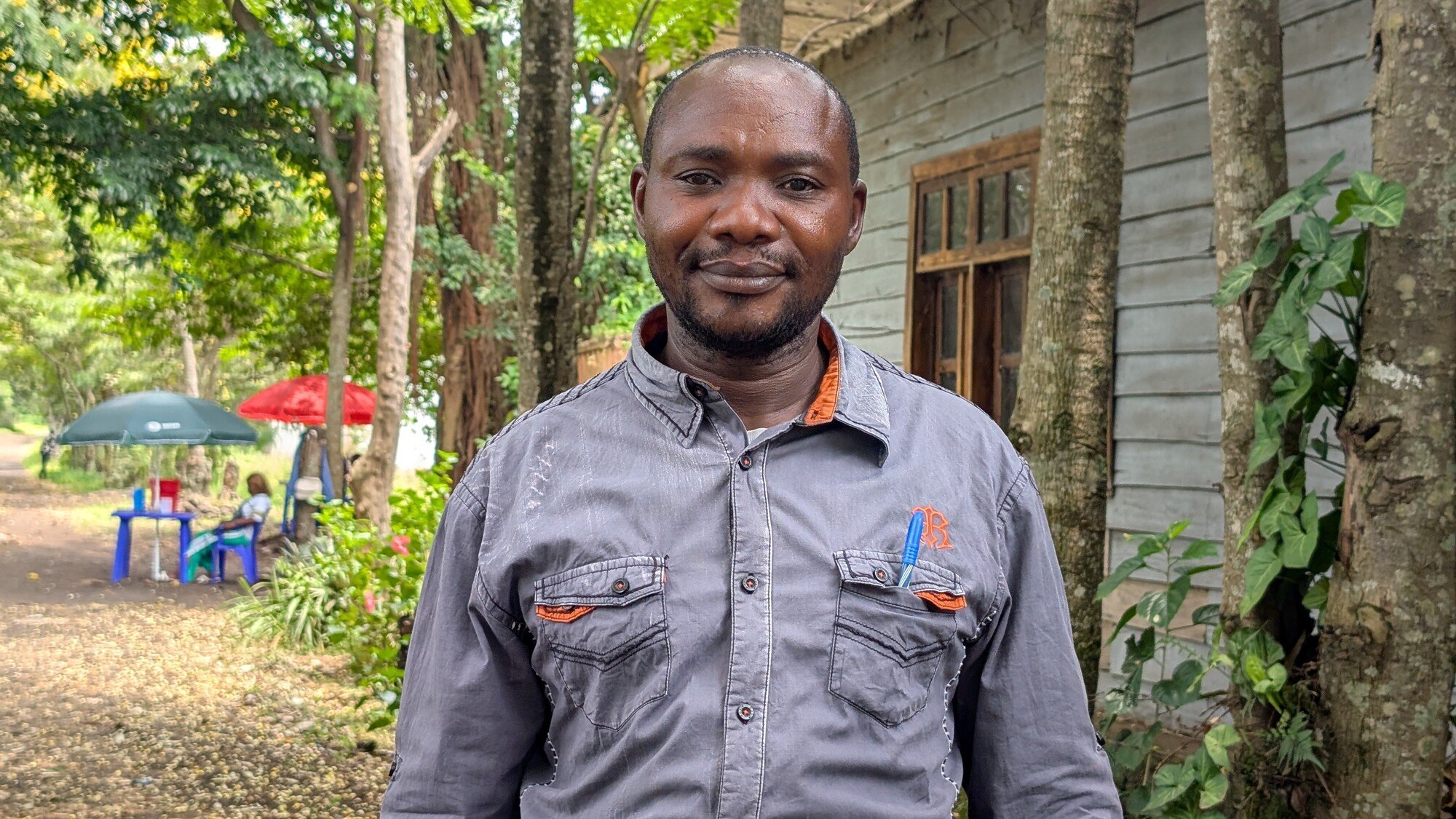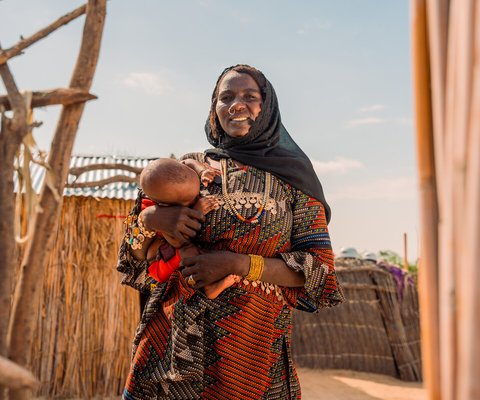Oxfam outlines what the U.S. Agency for International Development did and the real-life effects of USAID cuts.
U.S. foreign aid has long played a critical role in tackling poverty, hunger, and inequality worldwide, which is why the Trump administration’s recent cuts were met with public outrage and pushback from development and humanitarian organizations, including Oxfam.
Despite widespread public support for U.S.-funded foreign aid, the Trump administration has shut down the U.S. Agency for International Development (USAID) , which funded the majority of U.S. humanitarian and development assistance worldwide to people in some of the worst crises. The effect of these cuts on people is dire: At least 23 million children stand to lose access to education, and as many as 95 million people would lose access to basic healthcare, potentially leading to more than 3 million preventable deaths per year.
Oxfam has responded to the closure of USAID by joining other groups in a lawsuit to defend USAID and U.S. foreign assistance, which is ongoing.
So what does the Trump administration's decision to eliminate so much foreign aid mean, what impact could it have around the world, and why is it critical for the government to reverse this decision? Oxfam answers all of these questions and more.
What was USAID and what did it do?
USAID facilitated much of the humanitarian and foreign development assistance of the U.S. government during the decades since it was established in 1961. USAID brought lifesaving medicines, food, clean water, assistance for farmers, kept women and girls safe, and promoted peace—all for less than one percent of our federal budget.
“There is not a single area of development and humanitarian assistance USAID has not been involved in,” said Oxfam America’s President and CEO Abby Maxman, who has been working in international development for 30 years. “People at USAID have been thought leaders implementing ideas at scale, in wide ranging areas -- I don’t think there is a major area of the development system in which USAID did not bring its technical know-how, research, and evidence.”
Foreign aid programs help people around the world in various ways, providing food, healthcare, education, economic development, and disaster relief. It’s a key part of U.S. foreign policy and has proven to be an important factor in reducing global poverty. This type of assistance—from the United States as well as other governments and international institutions—has saved millions of lives.
How much aid does the U.S. give to foreign countries?
The United States used to spend around one percent of the federal budget on foreign development assistance, which includes both humanitarian assistance and development programs.
The agency that was overseeing much of U.S. foreign aid was USAID, which had a budget of $63 billion in 2023. The exact amount of aid carried out by USAID varied from year to year, but until 2025 it has been less than one percent of the federal budget, which worked out to about $105 per U.S. citizen per year.

Which countries have been impacted by the USAID closure?
The impacts of the USAID closure are being felt all around the world. In 2024, USAID was providing assistance to about 130 countries. Countries that needed lifesaving aid the most are experiencing the worst of the cuts, including Ukraine, the Democratic Republic of Congo, Ethiopia, and Syria, to name only a few.
Why shutting down USAID was widely unsupported
The Trump administration has presented the cutting of foreign assistance funding and the elimination of USAID as ways of reducing government spending. Its day-1 executive order indicated that such assistance is “not aligned with American interests and in many cases antithetical to American values.” Later decisions to pull back foreign assistance funding that had already been approved by Congress also cited “waste, fraud and abuse.”
Oxfam America wanted to investigate Americans' views on foreign aid and launched two waves of national opinion polling in February and May 2025.
What we learned was clear: The American public rejects Trump’s extreme cuts to lifesaving and development aid. More specifically:
- Two out of three Americans, including nearly half of Republicans, do not support the 85 percent cut to U.S. aid programs enacted by Secretary of State Rubio and the Trump administration in March—cuts that have been formalized in the president's FY26 budget proposal and reflected in the $8 billion cuts included in the foreign aid rescissions package.
- When asked how much would be appropriate for the U.S. to invest in foreign aid, more than 95 percent of respondents identified an amount higher than the administration’s current budget.
- More than three in four Americans signaled support for food assistance, water and sanitation, and disaster and medical relief programs.
These details dive deeper into the popular perceptions of foreign aid—beginning with widespread opposition to drastic aid reductions.
What are some examples of how USAID has helped people?
USAID’s work abroad covered many regions and issues including HIV prevention, the humanitarian crisis in Congo, war relief in Ukraine, among numerous others.
One of the more effective efforts funded by USAID over the last 50 years was in the area of maternal and child health (MCH). Since 1990 the number of children under the age of five dying has dropped by half, and 90 countries saw their rate of under-five mortality drop by two thirds during the same period. Just from 2020 until 2023, annual maternal deaths fell by 40 percent. Despite the fact that USAID programs have helped contribute to the tremendous progress in this area of public health in poor countries, recent cuts to USAID awards include 86 percent of the MCH projects.
Another program, which has saved the lives of millions, is the U.S. President’s Emergency Plan for AIDS Relief (PEPFAR). Since 2003, the program has saved over 25 million lives, prevented millions of HIV infections, and supported countries in HIV epidemic control. The program has been incredibly successful in increasing HIV testing, providing lifesaving treatment, and improving health systems around the world. Now, under the aid freeze, PEPFAR’s future is under threat, potentially leaving more than 20 million people – including 500,000 children – at risk without adequate HIV treatment and services.
“In Côte d’Ivoire, 70 percent of antiretroviral medication in the country, on which people living with HIV and AIDS depend, is provided through PEPFAR,” Maxman says she learned in a meeting with country partners in early February. “If we cut off the program, literally 70 percent of the people living with HIV will lose their treatment. The uncertainty this introduces is cruel.”

Examples of the impact of USAID cuts
Aid cuts will most severely affect people enduring conflict and dire emergencies, and where people are suffering in the worst forms of poverty. Within that group, women and children are always the most affected. Many people displaced by conflict and disasters will face unacceptably high risks of water-borne diseases (such as cholera) in refugee camps and informal settlements. With no support for childhood immunizations and maternal health programs, mothers and children will be at a higher risk of preventable diseases.
We have seen the human impact of cutting USAID in places, such as Ukraine, Yemen, the Democratic Republic of Congo, Syria, and the Occupied Palestinian Territory.
Following a 7.7 magnitude earthquake in Myanmar in late March, Oxfam's President and CEO Abby Maxman pointed out that shutting down USAID meants that the "U.S. government’s ability to respond to the humanitarian crisis in Myanmar and future crises is severely compromised. Speed, collaboration, and resources are life and death matters when disaster strikes. The illegal decision to dismantle USAID means the U.S. will be unable to show up as it has in past emergencies."
Beyond the halt in development assistance around the world, humanitarian aid workers in war zones are experiencing the immediate impact of cutting off so much of U.S. foreign disaster assistance.
For example, the administration’s order to pause all foreign development assistance occurred while hundreds of thousands of people in eastern areas of the Democratic Republic of Congo were fleeing violence, with many gathering in the city of Goma, where local water and sanitation infrastructure cannot meet their needs.
Many aid organizations funded by USAID were forced to immediately stop essential work–like providing clean water in Goma–which has lead to people sourcing water from Lake Kivu.This increases the likelihood of cholera, according to Camara Wabomundu, the agent in charge of infectious diseases and water, sanitation, and hygiene at the Buhimba Health Center in Goma.
“Suddenly everything collapsed; neither the hospital nor the communities were prepared for this sudden stop,” Wabomundo said, noting that his health center is left without the resources they need to avoid a cholera epidemic. “I fear that cholera will exterminate this population; they have survived the bombardments, but cutting off assistance could lead to more deaths than the war,” he said.
Cutting these types of initiatives may serve only to prolong a country’s path out of poverty. Maxman said in a press release in January that eliminating the work of USAID and U.S. foreign assistance “would be cruel, intentionally harmful and directly at odds with U.S. interests.”
How is Oxfam advocating and campaigning for humanitarian funding?
In addition to bringing the Trump administration to court to defend USAID, here’s how Oxfam America is also working in the United States to bring attention to the negative effects of these sudden and poorly considered policy changes.
Discussions with policy makers in Washington D.C.: Oxfam staff, in collaboration with Oxfam supporters and representatives of civil society organizations directly affected by the international aid cuts, have met with Congressional and State Department staff to advocate for humanitarian assistance funds that can help people in Ukraine, Syria, the Democratic Republic of Congo, and other countries experiencing conflict and poverty.
Aliona Pashchenko works for The Tenth of April organization in Ukraine, and she came to Washington, D.C., and joined with Oxfam to meet with members of Congress and report on the chaotic effects of the aid cuts. The Tenth of April helps people in Ukraine who are displaced by conflict, and Oxfam is one of their supporters.
Pashchenko explained that the sudden pause and eventual cuts in support from USAID will have long-term effects in her country. “The humanitarian funding pause didn’t just delay aid,” she said in a story published by DEVEX. “It fractured the foundation of how humanitarian support functions.”
Oxfam supporters take action: As part of Oxfam’s advocacy efforts in Washington, D.C., 100 Oxfam Action Network volunteers and Sisters on the Planet Ambassadors (a group of influential women leaders committed to fighting inequality) held 130 meetings on Capitol Hill in March, urging members of Congress to invest in humanitarian aid and economic policies that have the greatest impact on women and girls.
Oxfam is calling on its supporters to sign a petition asking Secretary of State Marco Rubio and members of Congress protect U.S. humanitarian and development assistance. So far, more than 37,000 people have signed the online petition, and thousands of others have sent email messages and made phone calls to members of Congress asking for support for humanitarian aid and long-term development assistance.
How you can help
Call your senators: Congress can and must fight back against this illegal action. Call 1-866-374-0409 now. We’ll give you a quick and easy message to share with your senators and then connect you directly to their offices. If you get voicemail, leave a message. More than 1,000 Oxfam supporters have already made calls and we’re hearing from Senate offices that they are making a real impact – make your call today.
Sign our petition protecting lifesaving aid: Humanitarian assistance is an essential part of U.S. foreign policy and has proven to be a key factor in reducing global poverty. By investing in critical programs that provide food, health care, education, economic development, and disaster relief, the U.S. saves lives, supports marginalized communities, and promotes global stability.



